
Hands-On Microservices with Kubernetes
¥70.84
Enhance your skills in building scalable infrastructure for your cloud-based applications Key Features * Learn to design a scalable architecture by building continuous integration (CI) pipelines with Kubernetes * Get an in-depth understanding of role-based access control (RBAC), continuous deployment (CD), and observability * Monitor a Kubernetes cluster with Prometheus and Grafana Book Description Kubernetes is among the most popular open-source platforms for automating the deployment, scaling, and operations of application containers across clusters of hosts, providing a container-centric infrastructure. Hands-On Microservices with Kubernetes starts by providing you with in-depth insights into the synergy between Kubernetes and microservices. You will learn how to use Delinkcious, which will serve as a live lab throughout the book to help you understand microservices and Kubernetes concepts in the context of a real-world application. Next, you will get up to speed with setting up a CI/CD pipeline and configuring microservices using Kubernetes ConfigMaps. As you cover later chapters, you will gain hands-on experience in securing microservices, and implementing REST, gRPC APIs, and a Delinkcious data store. In addition to this, you’ll explore the Nuclio project, run a serverless task on Kubernetes, and manage and implement data-intensive tests. Toward the concluding chapters, you’ll deploy microservices on Kubernetes and learn to maintain a well-monitored system. Finally, you’ll discover the importance of service meshes and how to incorporate Istio into the Delinkcious cluster. By the end of this book, you’ll have gained the skills you need to implement microservices on Kubernetes with the help of effective tools and best practices. What you will learn * Understand the synergy between Kubernetes and microservices * Create a complete CI/CD pipeline for your microservices on Kubernetes * Develop microservices on Kubernetes with the Go kit framework using best practices * Manage and monitor your system using Kubernetes and open-source tools * Expose your services through REST and gRPC APIs * Implement and deploy serverless functions as a service * Externalize authentication, authorization and traffic shaping using a service mesh * Run a Kubernetes cluster in the cloud on Google Kubernetes Engine Who this book is for This book is for developers, DevOps engineers, or anyone who wants to develop large-scale microservice-based systems on top of Kubernetes. If you are looking to use Kubernetes on live production projects or want to migrate existing systems to a modern containerized microservices system, then this book is for you. Coding skills, together with some knowledge of Docker, Kubernetes, and cloud concepts will be useful.
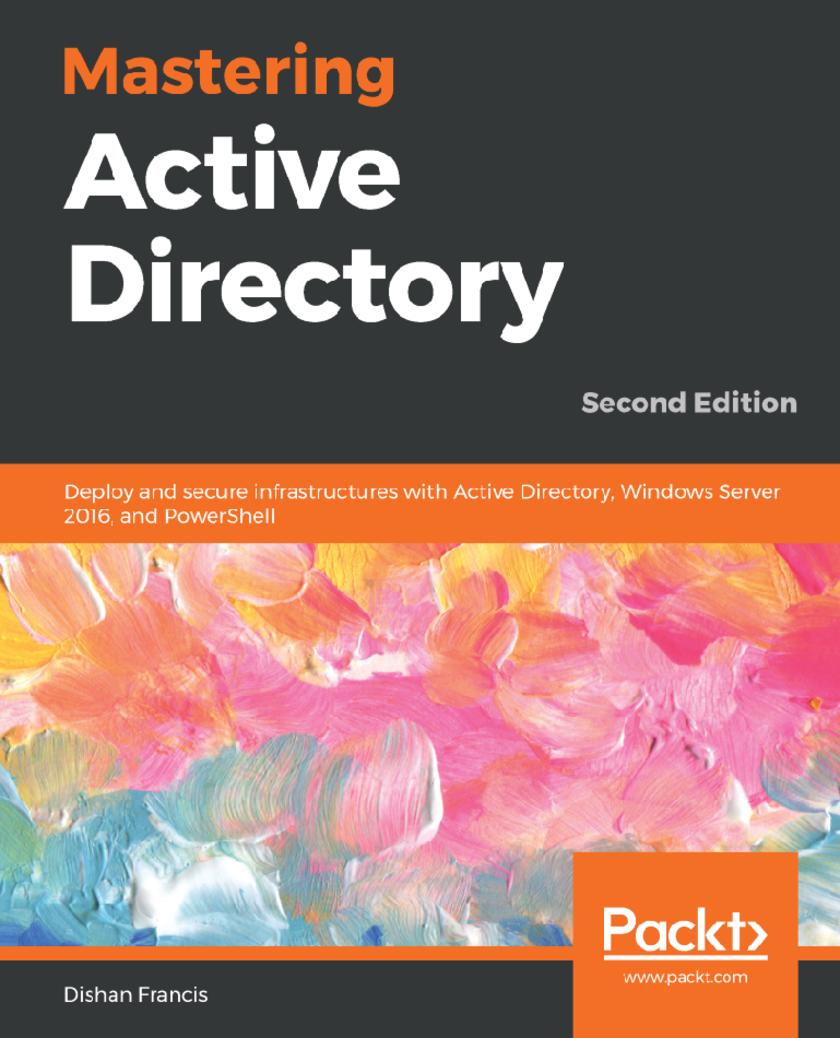
Mastering Active Directory
¥90.46
Become an expert at managing enterprise identity infrastructure by leveraging Active Directory Key Features * Explore the new features in Active Directory Domain Service * Manage your Active Directory services for Windows Server 2016 effectively * Automate administrative tasks in Active Directory using PowerShell Core 6.x Book Description Active Directory (AD) is a centralized and standardized system that automates networked management of user data, security, and distributed resources and enables inter-operation with other directories. This book will first help you brush up on the AD architecture and fundamentals, before guiding you through core components, such as sites, trust relationships, objects, and attributes. You will then explore AD schemas, LDAP, RMS, and security best practices to understand objects and components and how they can be used effectively. Next, the book will provide extensive coverage of AD Domain Services and Federation Services for Windows Server 2016, and help you explore their new features. Furthermore, you will learn to manage your identity infrastructure for a hybrid cloud setup. All this will help you design, plan, deploy, manage operations, and troubleshoot your enterprise identity infrastructure in a secure and effective manner. You’ll later discover Azure AD Module, and learn to automate administrative tasks using PowerShell cmdlets. All along, this updated second edition will cover content based on the latest version of Active Directory, PowerShell 5.1 and LDAP. By the end of this book, you’ll be well versed with best practices and troubleshooting techniques for improving security and performance in identity infrastructures. What you will learn * Design your Hybrid AD environment by evaluating business and technology requirements * Protect sensitive data in a hybrid environment using Azure Information Protection * Explore advanced functionalities of the schema * Learn about Flexible Single Master Operation (FSMO) roles and their placement * Install and migrate Active Directory from older versions to Active Directory 2016 * Control users, groups, and devices effectively * Design your OU structure in the most effective way * Integrate Azure AD with Active Directory Domain Services for a hybrid setup Who this book is for If you are an Active Directory administrator, system administrator, or network professional who has basic knowledge of Active Directory and is looking to become an expert in this topic, this book is for you.
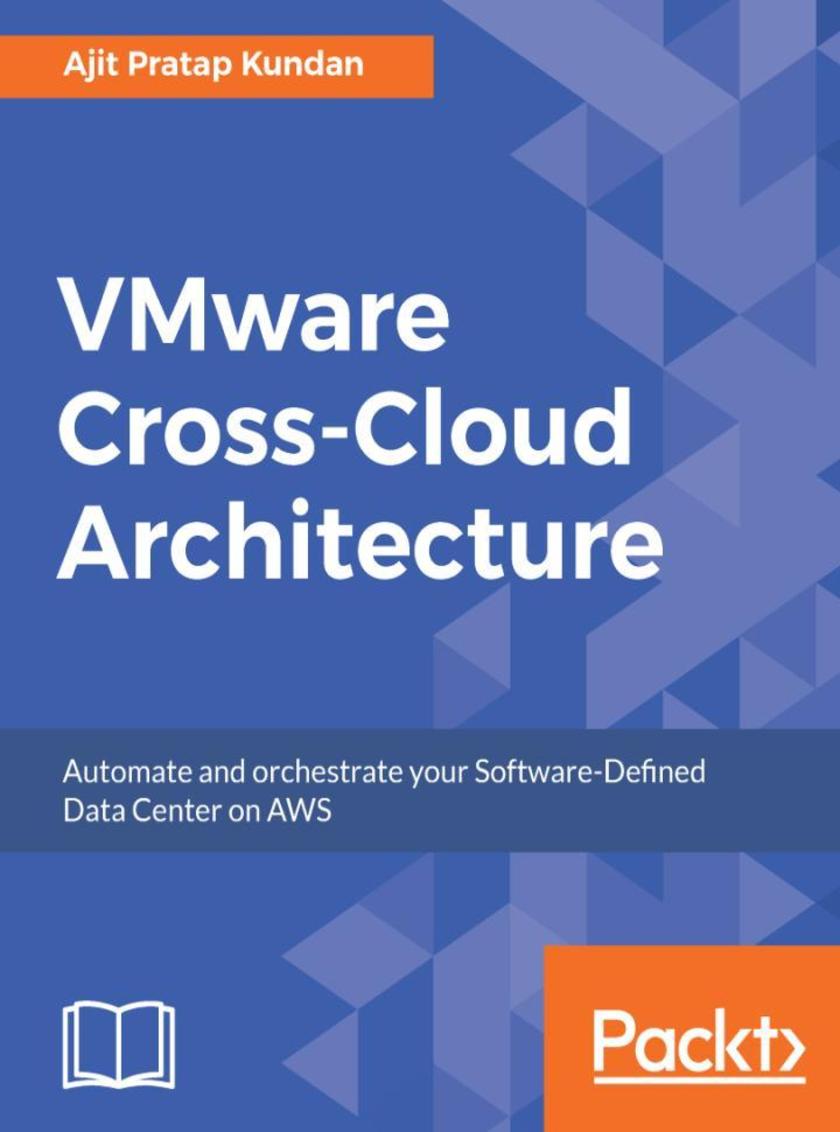
VMware Cross-Cloud Architecture
¥90.46
Enhance your virtualization skills by mastering storage and network virtualization with automation across different Clouds About This Book ? Migrate and build your applications in Hybrid Cloud with VMware Cross Cloud components and services ? Gain in-depth configuration insights of VMware Cross Cloud architecture ? Learn to migrate applications from VMware to AWS and IBM Cloud Who This Book Is For This book is for administrators, Cloud architects and network engineers who want to globalize their infrastructure using VMware and AWS services. An initial setup of workloads and data center is beneficial. What You Will Learn ? Install and configure the Cloud foundation with Cross-Cloud services ? Configure vSphere high availability with the vCenter redundancy setup ? Architect and configure VMware with AWS Cloud ? Deploy VMware components in IBM Soft Layer ? Extend your DR setup with VMware to consume DRaaS ? Design and configure software-defined networking ? Implement compliance regulations to fix violations In Detail Over the past two decades, VMware vSphere has been known as the most trusted and reliable virtualization platform. VMware Cross-Cloud Architecture shows you how to design and configure Cross Cloud Architecture by using VMware Cloud Foundation and vRealize Suite with various use cases across private, public, and hybrid Cloud. This book takes you through everything from a basic understanding of virtualization to advanced aspects of storage and network virtualization, clustering, automation, and management. This book will be your guide to designing all aspects of Cloud. We start with the challenges faced by a traditional data center, define problem statements for you, and then brief you on respective solutions. Moving on, all kinds of virtualization and Cloud offerings from AWS and IBM Soft Layer are introduced and discussed in detail. Then, you'll learn how to design IT infrastructures for new and existing applications with a combination of Cloud Foundation, vRealize Suite, and vSphere enabled with VSAN and NSX. Furthermore, you'll learn how to design and configure high availability, disaster recovery, and apply an appropriate compliance matrix. Toward the end of the book, you will learn how to calculate the TCO/ROI, along with the VMware products packaging and licensing in detail. Style and approach This book follows a step-by-step, practical approach which will help you to have a better understanding of the cloud technology and the steps required to quickly reap its benefits while at the same time lowering your IT implementation risk and cost.
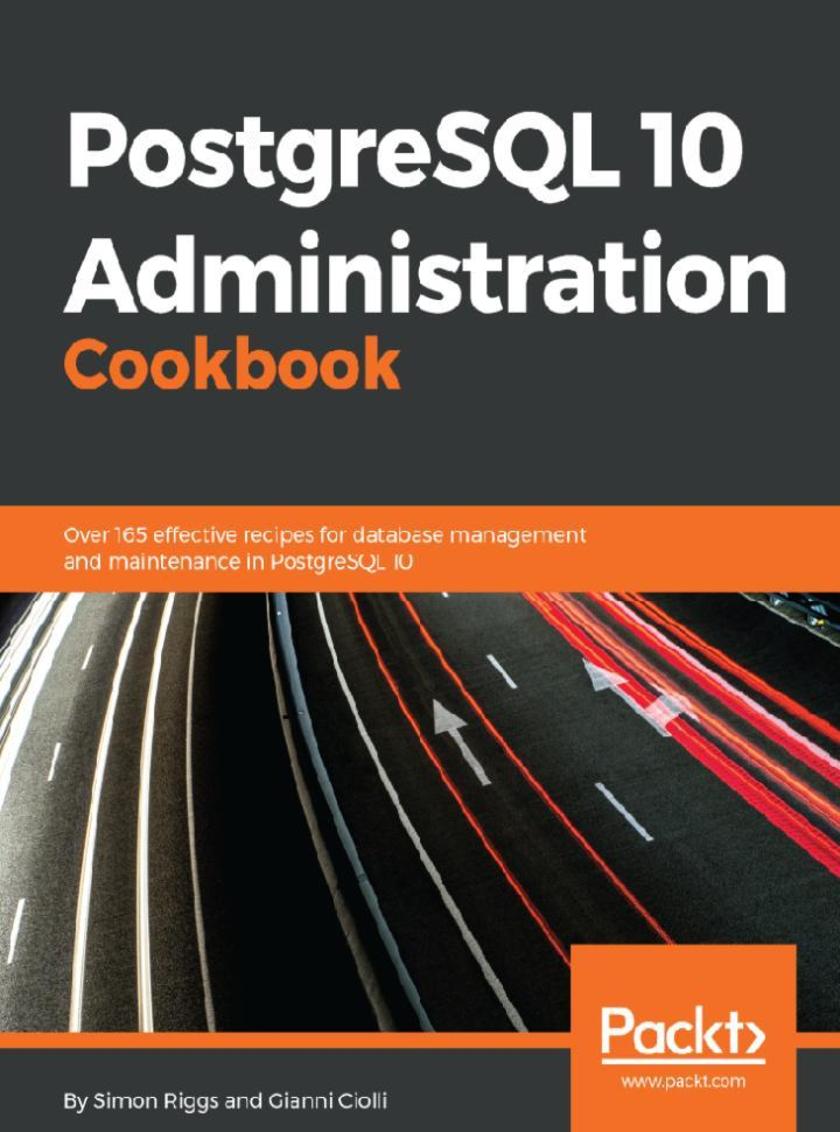
PostgreSQL 10 Administration Cookbook
¥90.46
A practical guide to administer, monitor and replicate your PostgreSQL 10 database About This Book ? Get to grips with the capabilities of PostgreSQL 10 to administer your database more efficiently ? Monitor, tune, secure and protect your database for optimal performance ? A step-by-step, recipe-based guide to help you tackle any problem in PostgreSQL 10 administration with ease Who This Book Is For This book is for database administrators, data architects, developers, or anyone with an interest in planning for, or running, live production databases using PostgreSQL. It is most suited to those looking for hands-on solutions to any problem associated with PostgreSQL administration. What You Will Learn ? Get to grips with the newly released PostgreSQL 10 features to improve database performance and reliability ? Manage open source PostgreSQL versions 10 on various platforms. ? Explore best practices for planning and designing live databases ? Select and implement robust backup and recovery techniques in PostgreSQL 10 ? Explore concise and clear guidance on replication and high availability ? Discover advanced technical tips for experienced users In Detail PostgreSQL is a powerful, open source database management system with an enviable reputation for high performance and stability. With many new features in its arsenal, PostgreSQL 10 allows users to scale up their PostgreSQL infrastructure. This book takes a step-by-step, recipe-based approach to effective PostgreSQL administration. Throughout this book, you will be introduced to these new features such as logical replication, native table partitioning, additional query parallelism, and much more. You will learn how to tackle a variety of problems that are basically the pain points for any database administrator - from creating tables to managing views, from improving performance to securing your database. More importantly, the book pays special attention to topics such as monitoring roles, backup, and recovery of your PostgreSQL 10 database, ensuring high availability, concurrency, and replication. By the end of this book, you will know everything you need to know to be the go-to PostgreSQL expert in your organization. Style and approach The book is a step by step guide with example-driven recipes, focused on the new features of the latest PostgreSQL version10. This book will serve as a specific guide to understand and leverage useful PostgreSQL functionalities to create better and more efficient databases.
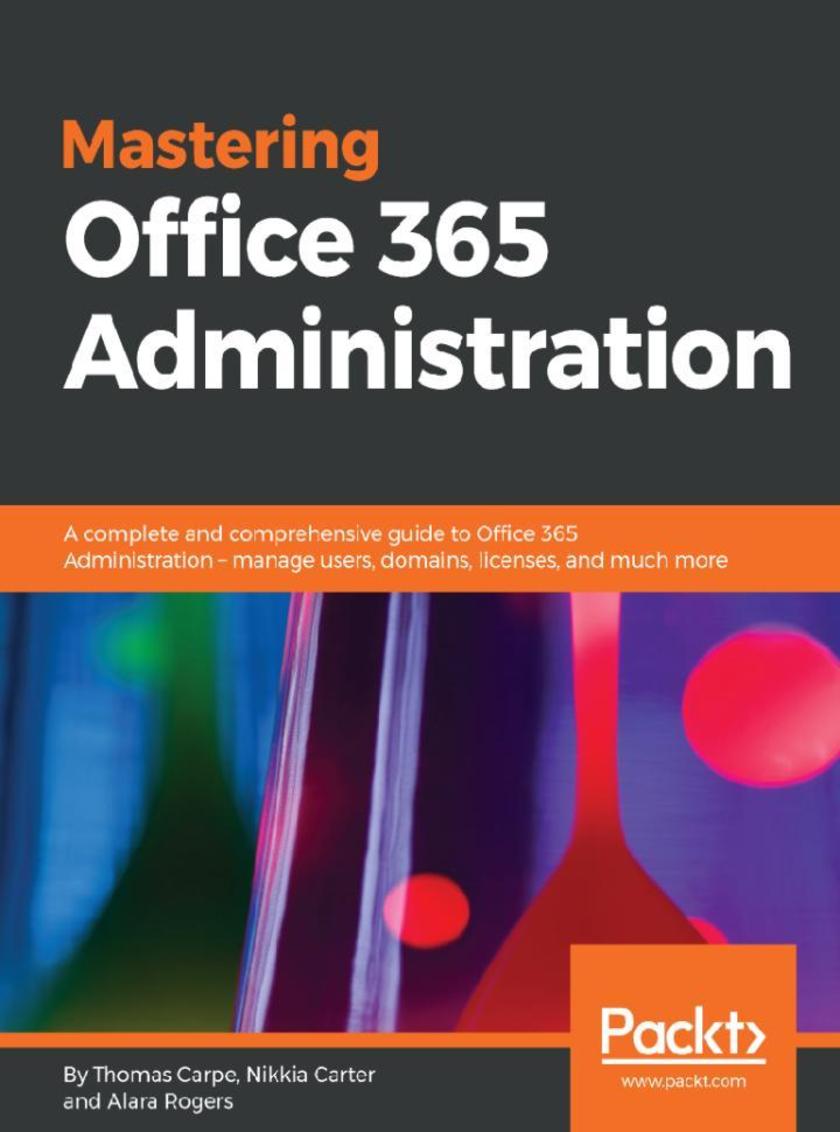
Mastering Office 365 Administration
¥73.02
Leverage Office 365 to increase your organization's efficiency About This Book ? Perform common to advanced-level management and administrative tasks for your organization with Office 365 ? Become an Office 365 generalist who can work with the entire stack—not just specific products ? An advanced-level guide that will teach you to implement enterprise-level services into your organization, no matter the size of the business Who This Book Is For This book targets architects, sys admins, engineers, and administrators who are working with Office 365 and are responsible for configuring, implementing, and managing Office 365 in their organization. A prior knowledge of Office 365 and Exchange servers is mandatory. What You Will Learn ? Get an understanding of the vast Office 365 feature set ? Learn how workloads and applications interact and integrate with each other ? Connect PowerShell to various Office 365 services and perform tasks ? Learn to manage Skype for Business Online ? Get support and monitor Office 365 service health ? Manage and administer identities and groups efficiently In Detail In today's world, every organization aims to migrate to the cloud to become more efficient by making full use of the latest technologies. Office 365 is your one-stop solution to making your organization reliable, scalable, and fast. The book will start with an overview of Office 365 components, and help you learn how to use the administration portal, and perform basic administration. Then this book covers common management tasks such as managing users, admin roles, groups, securing Office 365, and enforcing compliance. In the next set of chapters, you will learn topics such as managing Skype for Business Online, Yammer, OneDrive for Business, and Microsoft Teams. In the final section of the book, you will learn how to perform reporting and monitor Office 365 service health. By the end of this book, you will be able to implement enterprise-level services with Office 365 based on your organization's needs. Style and approach A practical guide that offers a simple way to easily understand and access common administration tasks, without getting lost in the plethora of online resources, support pages, blog posts, and videos.
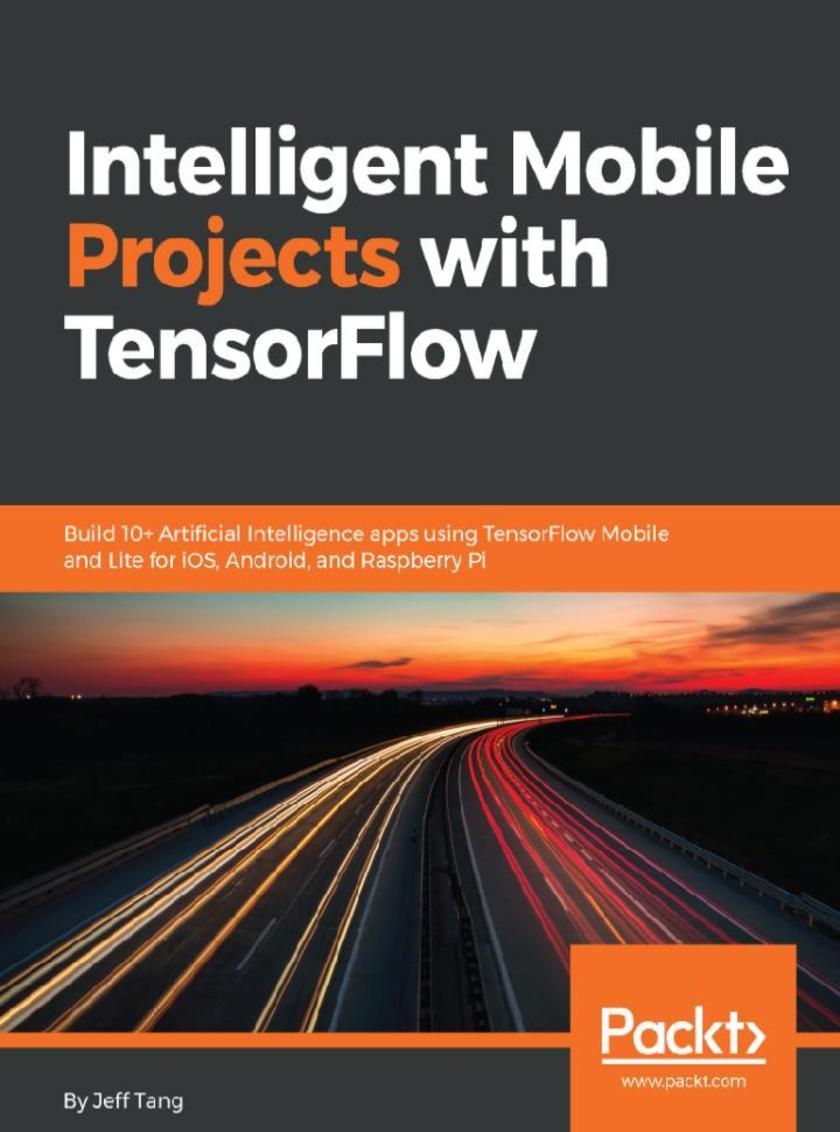
Intelligent Mobile Projects with TensorFlow
¥90.46
Create Deep Learning and Reinforcement Learning apps for multiple platforms with TensorFlow About This Book ? Build TensorFlow-powered AI applications for mobile and embedded devices ? Learn modern AI topics such as computer vision, NLP, and deep reinforcement learning ? Get practical insights and exclusive working code not available in the TensorFlow documentation Who This Book Is For If you're an iOS/Android developer interested in building and retraining others' TensorFlow models and running them in your mobile apps, or if you're a TensorFlow developer and want to run your new and amazing TensorFlow models on mobile devices, this book is for you. You'll also benefit from this book if you're interested in TensorFlow Lite, Core ML, or TensorFlow on Raspberry Pi. What You Will Learn ? Classify images with transfer learning ? Detect objects and their locations ? Transform pictures with amazing art styles ? Understand simple speech commands ? Describe images in natural language ? Recognize drawing with Convolutional Neural Network and Long Short-Term Memory ? Predict stock price with Recurrent Neural Network in TensorFlow and Keras ? Generate and enhance images with generative adversarial networks ? Build AlphaZero-like mobile game app in TensorFlow and Keras ? Use TensorFlow Lite and Core ML on mobile ? Develop TensorFlow apps on Raspberry Pi that can move, see, listen, speak, and learn In Detail As a developer, you always need to keep an eye out and be ready for what will be trending soon, while also focusing on what's trending currently. So, what's better than learning about the integration of the best of both worlds, the present and the future? Artificial Intelligence (AI) is widely regarded as the next big thing after mobile, and Google's TensorFlow is the leading open source machine learning framework, the hottest branch of AI. This book covers more than 10 complete iOS, Android, and Raspberry Pi apps powered by TensorFlow and built from scratch, running all kinds of cool TensorFlow models offline on-device: from computer vision, speech and language processing to generative adversarial networks and AlphaZero-like deep reinforcement learning. You’ll learn how to use or retrain existing TensorFlow models, build your own models, and develop intelligent mobile apps running those TensorFlow models. You'll learn how to quickly build such apps with step-by-step tutorials and how to avoid many pitfalls in the process with lots of hard-earned troubleshooting tips. Style and approach This book takes a practical, project-based approach to teach specifics of mobile development with TensorFlow. Using a reader-friendly approach, this book will provide detailed instructions and also discuss the broader context covered within.
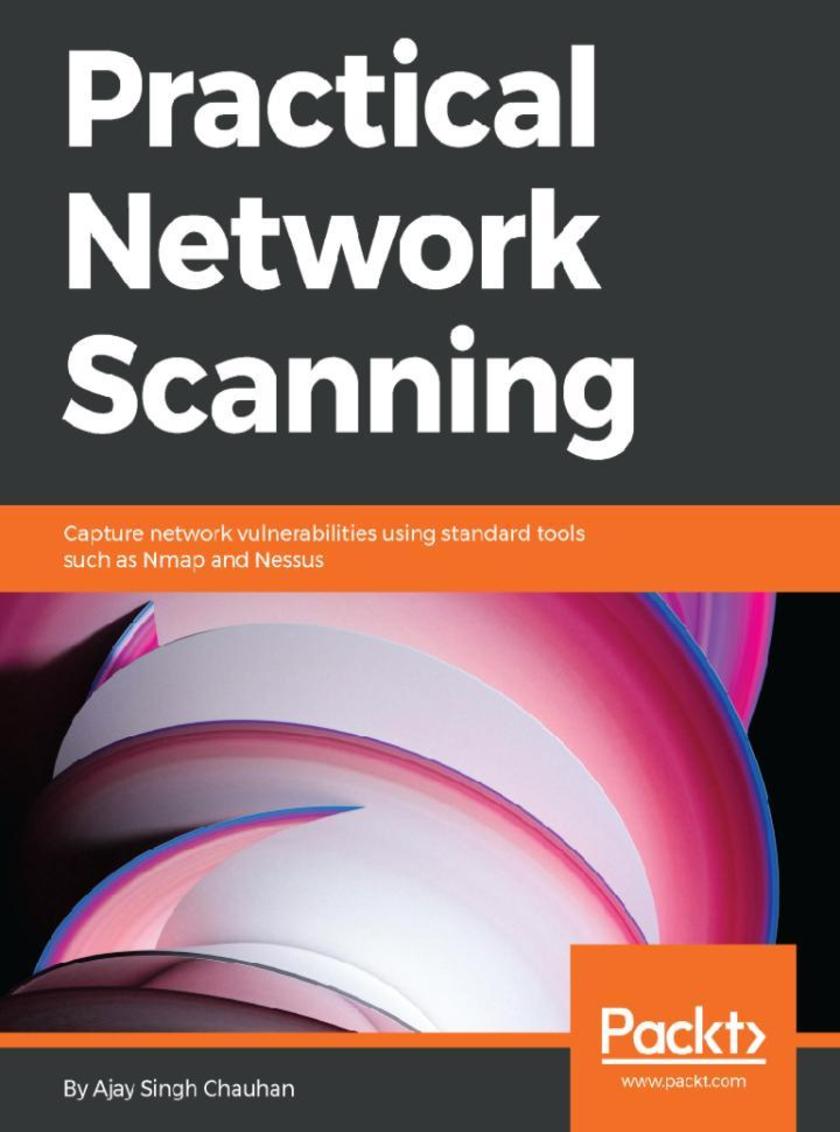
Practical Network Scanning
¥73.02
Get more from your network by securing its infrastructure and increasing its effectiveness About This Book ? Learn to choose the best network scanning toolset for your system ? Implement different concepts of network scanning such as port scanning and OS detection ? Adapt a practical approach to securing your network Who This Book Is For If you are a security professional who is responsible for securing an organization's infrastructure, then this book is for you. What You Will Learn ? Achieve an effective security posture to design security architectures ? Learn vital security aspects before moving to the Cloud ? Launch secure applications with Web Application Security and SQL Injection ? Explore the basics of threat detection/response/ mitigation with important use cases ? Learn all about integration principles for PKI and tips to secure it ? Design a WAN infrastructure and ensure security over a public WAN In Detail Network scanning is the process of assessing a network to identify an active host network; same methods can be used by an attacker or network administrator for security assessment. This procedure plays a vital role in risk assessment programs or while preparing a security plan for your organization. Practical Network Scanning starts with the concept of network scanning and how organizations can benefit from it. Then, going forward, we delve into the different scanning steps, such as service detection, firewall detection, TCP/IP port detection, and OS detection. We also implement these concepts using a few of the most prominent tools on the market, such as Nessus and Nmap. In the concluding chapters, we prepare a complete vulnerability assessment plan for your organization. By the end of this book, you will have hands-on experience in performing network scanning using different tools and in choosing the best tools for your system. Style and approach A practical guide that offers a simple way to easily understand network security concepts and apply them to strengthen your network.
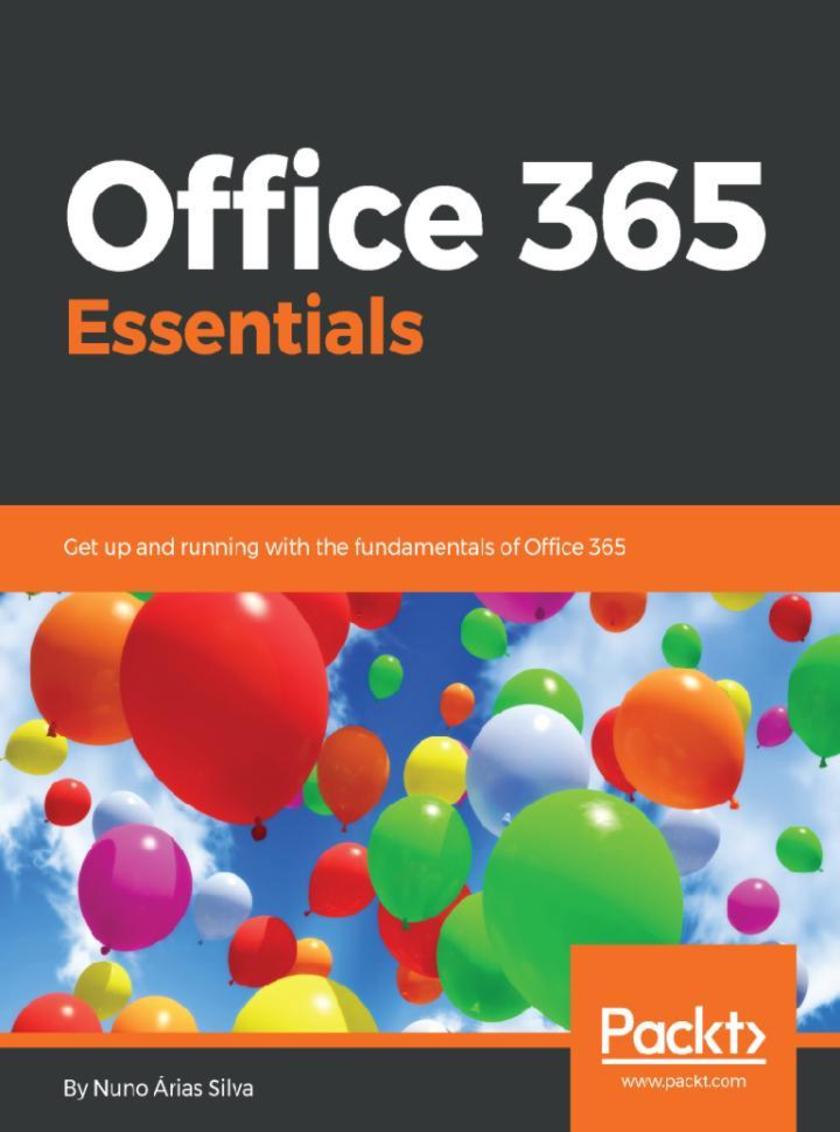
Office 365 Essentials
¥54.49
Leverage Office 365 to increase your organization's efficiency by managing users, domains, licenses, and much more in your organization with most powerful subscription software. About This Book ? Get acquainted with the basics of Office 365 ? Configure and manage workloads efficiently using Office 365 ? A comprehensive guide covering every aspect of planning, and managing this multifaceted collaboration system. Who This Book Is For If you are working as a system administration or an IT professional and are keen to learn the fundamentals of Office 365, then this book is for you. No prior knowledge of office 365 is necessary. What You Will Learn ? Learn how to implement Office 365 from scratch and how to use best practices to be a successful Office 365 professional ? Understand Microsoft productivity services to take your organization or business to the next level by increasing productivity. ? Learn how workloads and applications interact and integrate with each other ? Learn to manage Skype for Business Online ? Get support and monitor service health with Office 365 ? Manage and administer identities and groups efficiently In Detail Office 365 is suite of advanced collaboration tools used by many well known organizations and their system administrators. This book starts with an introduction to Office 365 and its basic fundamentals. Then we move towards workload management and deployment. You will delve into identities, authentications, and managing office 365. We also cover concepts such as collaboration with Microsoft teams and tools such as Delve and Skype for collaboration. Towards the end of the book, you'll master monitoring and security concepts. By the end of this book, you will have hands-on experience working with Office 365 and its collaboration tools and services Style and approach A practical guide that offers a simple way to easily understand Office 365—a complete reference for planning, configuring, and maintaining Office 365.

Mastering Machine Learning Algorithms
¥81.74
Explore and master the most important algorithms for solving complex machine learning problems. About This Book ? Discover high-performing machine learning algorithms and understand how they work in depth. ? One-stop solution to mastering supervised, unsupervised, and semi-supervised machine learning algorithms and their implementation. ? Master concepts related to algorithm tuning, parameter optimization, and more Who This Book Is For This book is an ideal and relevant source of content for data science professionals who want to delve into complex machine learning algorithms, calibrate models, and improve the predictions of the trained model. A basic knowledge of machine learning is preferred to get the best out of this guide. What You Will Learn ? Explore how a ML model can be trained, optimized, and evaluated ? Understand how to create and learn static and dynamic probabilistic models ? Successfully cluster high-dimensional data and evaluate model accuracy ? Discover how artificial neural networks work and how to train, optimize, and validate them ? Work with Autoencoders and Generative Adversarial Networks ? Apply label spreading and propagation to large datasets ? Explore the most important Reinforcement Learning techniques In Detail Machine learning is a subset of AI that aims to make modern-day computer systems smarter and more intelligent. The real power of machine learning resides in its algorithms, which make even the most difficult things capable of being handled by machines. However, with the advancement in the technology and requirements of data, machines will have to be smarter than they are today to meet the overwhelming data needs; mastering these algorithms and using them optimally is the need of the hour. Mastering Machine Learning Algorithms is your complete guide to quickly getting to grips with popular machine learning algorithms. You will be introduced to the most widely used algorithms in supervised, unsupervised, and semi-supervised machine learning, and will learn how to use them in the best possible manner. Ranging from Bayesian models to the MCMC algorithm to Hidden Markov models, this book will teach you how to extract features from your dataset and perform dimensionality reduction by making use of Python-based libraries such as scikit-learn. You will also learn how to use Keras and TensorFlow to train effective neural networks. If you are looking for a single resource to study, implement, and solve end-to-end machine learning problems and use-cases, this is the book you need. Style and approach A hands-on guide filled with real-world examples of popular algorithms used for data science and machine learning
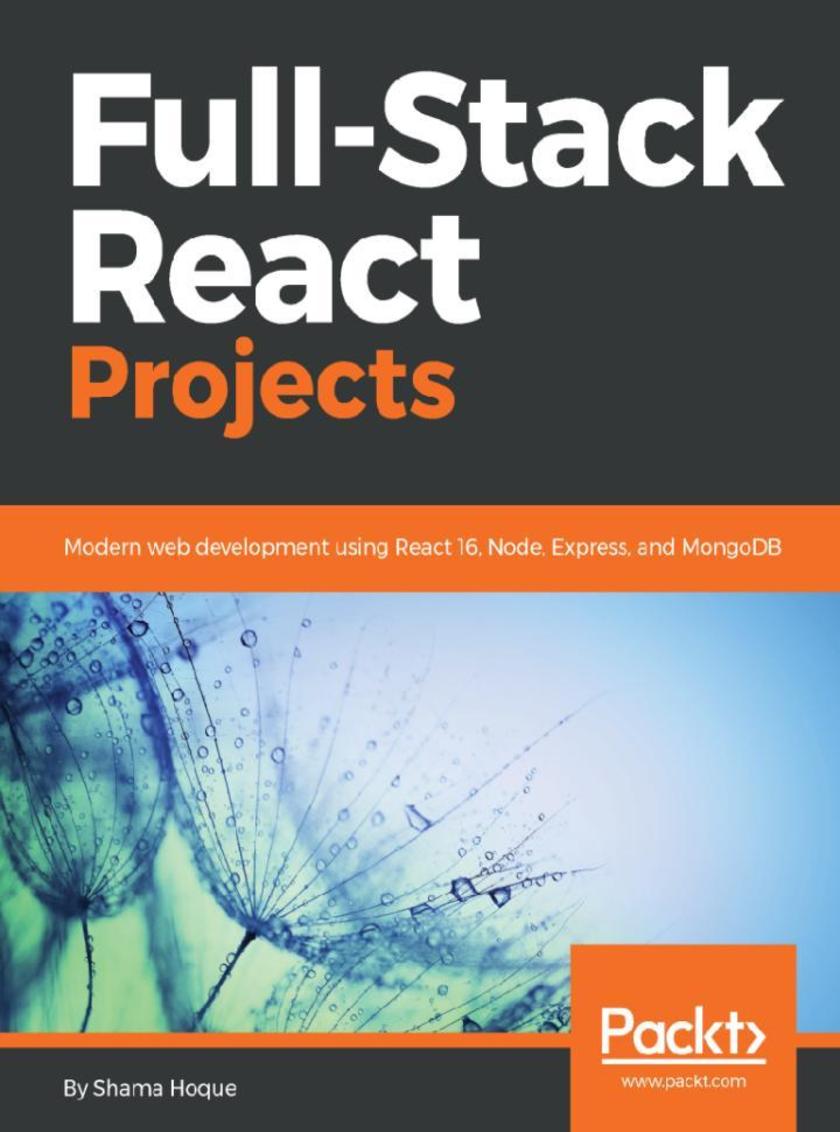
Full-Stack React Projects
¥81.74
Unleash the power of MERN stack by building diverse web applications using React, Node.js, Express, and MongoDB About This Book ? Create dynamic web applications with the MERN stack ? Leverage the power of React in building interactive and complex user interfaces ? Unlock the potential of Node, Express, and MongoDB to build modern full-stack applications Who This Book Is For Full-Stack React Web Development Projects is for JavaScript developers who have some experience with React, but no previous experience with full-stack development involving Node, Express, and MongoDB, and who want practical guidelines to start building different types of real-world web applications with this stack. What You Will Learn ? Set up your development environment and develop a MERN application ? Implement user authentication and authorization using JSON Web Tokens ? Build a social media application by extending the basic MERN application ? Create an online marketplace application with shopping cart and Stripe payments ? Develop a media streaming application using MongoDB GridFS ? Implement server-side rendering with data to improve SEO ? Set up and use React 360 to develop user interfaces with VR capabilities ? Learn industry best practices to make MERN stack applications reliable and scalable In Detail The benefits of using a full JavaScript stack for web development are undeniable, especially when robust and widely adopted technologies such as React, Node, and Express and are available. Combining the power of React with industry-tested, server-side technologies, such as Node, Express, and MongoDB, creates a diverse array of possibilities when developing real-world web applications. This book guides you through preparing the development environment for MERN stack-based web development, to creating a basic skeleton application and extending it to build four different web applications. These applications include a social media, an online marketplace, a media streaming, and a web-based game application with virtual reality features. While learning to set up the stack and developing a diverse range of applications with this book, you will grasp the inner workings of the MERN stack, extend its capabilities for complex features, and gain actionable knowledge of how to prepare MERN-based applications to meet the growing demands of real-world web applications. Style and approach This book provides practical guidelines on setting up and building MERN stack based applications, while providing further explanations on key concepts and implementations.
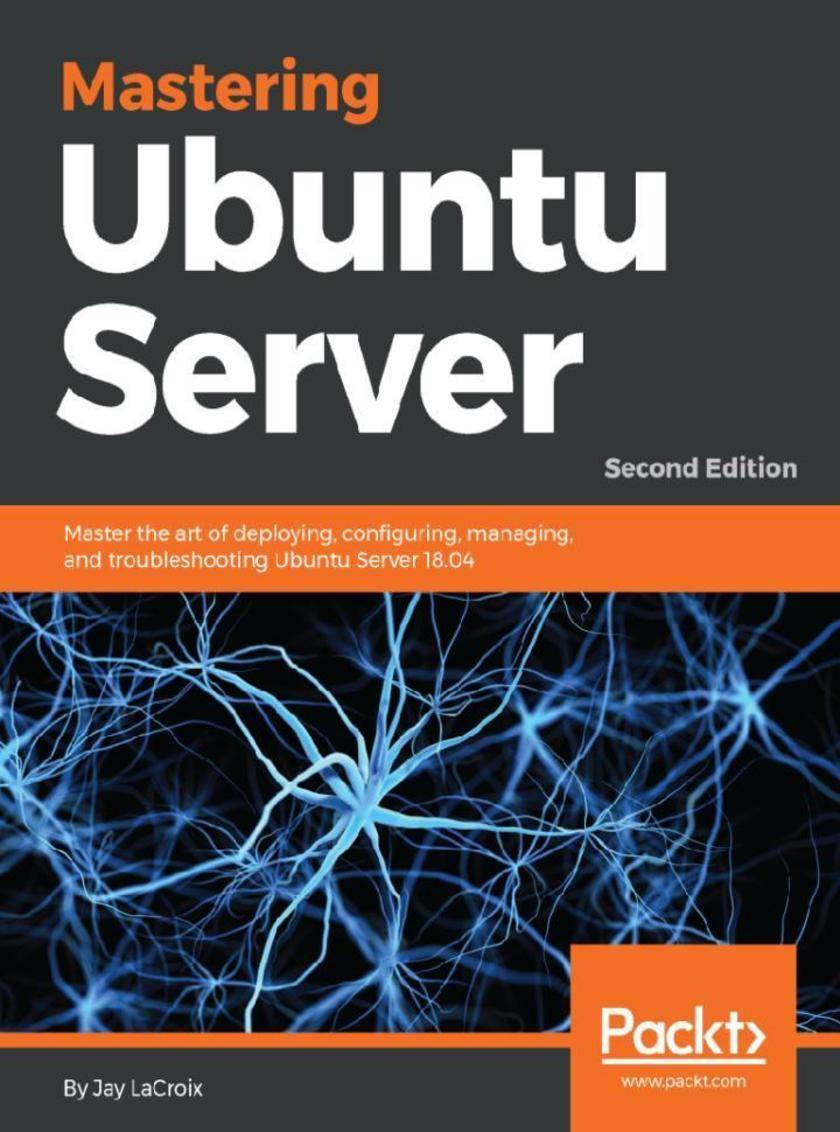
Mastering Ubuntu Server
¥81.74
Get up-to-date with the finer points of Ubuntu Server using this comprehensive guide About This Book ? A practical easy-to-understand book that will teach you how to deploy, maintain and troubleshoot Ubuntu Server ? Get well-versed with newly-added features in Ubuntu 18.04. ? Learn to manage cutting-edge technologies such as virtualization, containers, Nextcloud and more Who This Book Is For This book is intended for readers with intermediate or advanced-beginner skills with Linux, who would like to learn all about setting up servers with Ubuntu Server. This book assumes that the reader knows the basics of Linux, such as editing configuration files and running basic commands. What You Will Learn ? Manage users, groups, and permissions ? Encrypt and decrypt disks with Linux Unified Key Setup (LUKS) ? Set up SSH for remote access, and connect it to other nodes ? Add, remove, and search for packages ? Use NFS and Samba to share directories with other users ? Get to know techniques for managing Apache and MariaDB ? Explore best practices and troubleshooting techniques ? Get familiar with scripting ? Automate server deployments with Ansible In Detail Ubuntu Server has taken the data centers by storm. Whether you're deploying Ubuntu for a large-scale project or for a small office, it is a stable, customizable, and powerful Linux distribution that leads the way with innovative and cutting-edge features. For both simple and complex server deployments, Ubuntu's flexible nature can be easily adapted to meet to the needs of your organization. With this book as your guide, you will learn all about Ubuntu Server, from initial deployment to creating production-ready resources for your network. The book begins with the concept of user management, group management, and filesystem permissions. Continuing into managing storage volumes, you will learn how to format storage devices, utilize logical volume management, and monitor disk usage. Later, you will learn how to virtualize hosts and applications, which will cover setting up KVM/QEMU, as well as containerization with both Docker and LXD. As the book continues, you will learn how to automate configuration with Ansible, as well as take a look at writing scripts. Lastly, you will explore best practices and troubleshooting techniques when working with Ubuntu Server that are applicable to real-world scenarios. By the end of the book, you will be an expert Ubuntu Server administrator who is well-versed in its advanced concepts. Style and approach This book is an advanced guide that will show readers how to administer, manage, and deploy Ubuntu server and will also provide expert-level knowledge on advanced security and backup techniques.
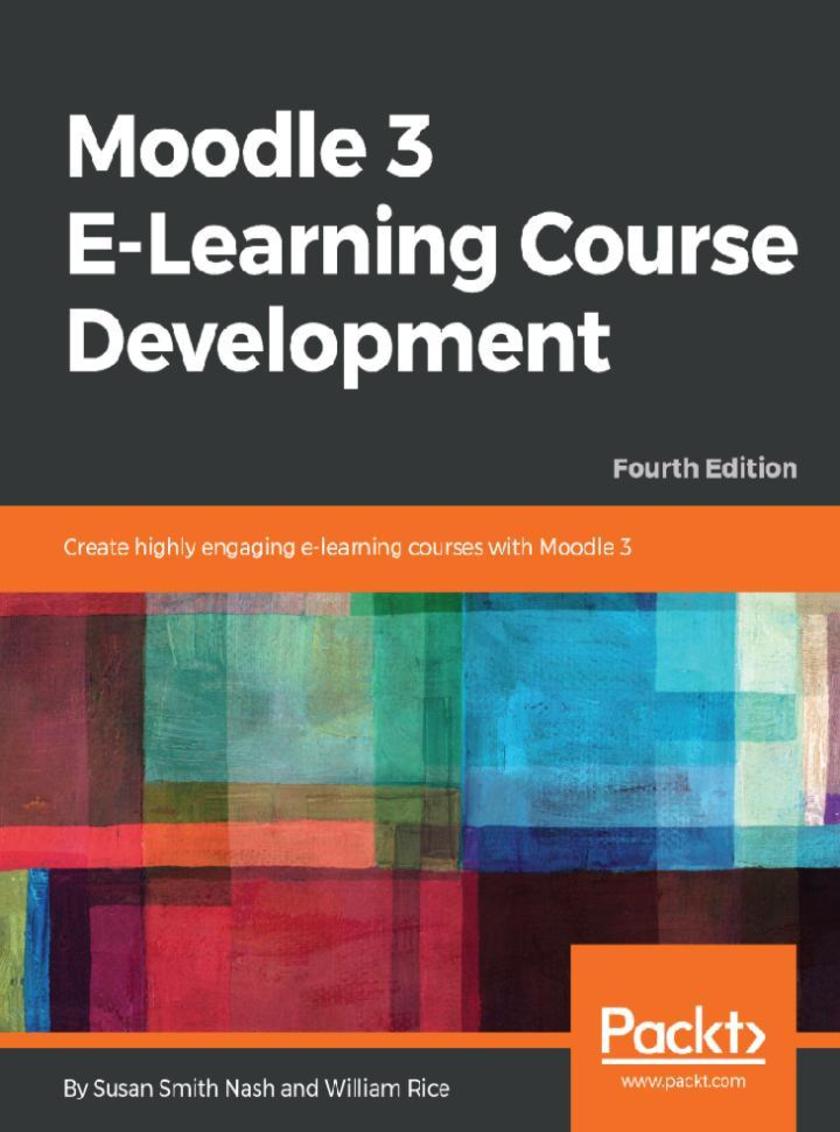
Moodle 3 E-Learning Course Development
¥90.46
A complete guide on course development and delivery using Moodle 3.x About This Book ? Get the best out of the latest Moodle 3 framework to ensure successful learning ? Gain experience in creating different kinds of courses ? Create your first Moodle VR app using the Moodle VR toolset Who This Book Is For This book is for anyone who wants to get the best out of Moodle. As a beginner, this is a thorough guide for you to understand how the software works, with great ideas for getting off to a good start with your first course. Some experience of working with e-learning systems will be beneficial. Experienced Moodle users will find powerful insights into developing successful and educational courses. What You Will Learn ? Know what Moodle does and how it supports your teaching strategies ? Install Moodle on your computer and navigate your way around it ? Understand all of Moodle's learning features ? Monitor how learners interact with your site using site statistics ? Add multimedia content to your site ? Allow students to enroll themselves or invite other students to join a course In Detail Moodle is a learning platform or Course Management System (CMS) that is easy to install and use, but the real challenge is in developing a learning process that leverages its power and maps the learning objectives to content and assessments for an integrated and effective course. Moodle 3 E-Learning Course Development guides you through meeting that challenge in a practical way. This latest edition will show you how to add static learning material, assessments, and social features such as forum-based instructional strategy, a chat module, and forums to your courses so that students reach their learning potential. Whether you want to support traditional class teaching or lecturing, or provide complete online and distance e-learning courses, this book will prove to be a powerful resource throughout your use of Moodle. You’ll learn how to create and integrate third-party plugins and widgets in your Moodle app, implement site permissions and user accounts, and ensure the security of content and test papers. Further on, you’ll implement PHP scripts that will help you create customized UIs for your app. You’ll also understand how to create your first Moodle VR e-learning app using the latest VR learning experience that Moodle 3 has to offer. By the end of this book, you will have explored the decisions, design considerations, and thought processes that go into developing a successful course. Style and approach Packed with clear step-by-step instructions, plenty of screenshots, and thorough explanations, this book guides you through the many features and options that you have to choose from when using Moodle 3.
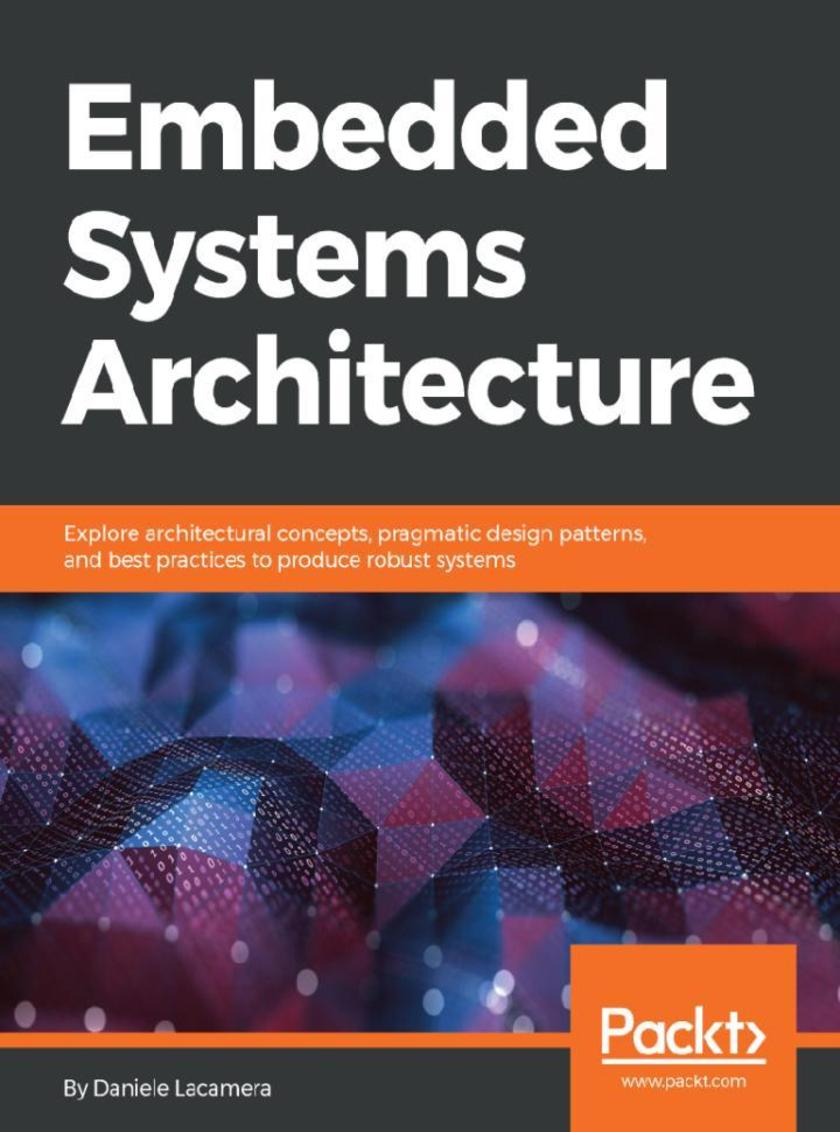
Embedded Systems Architecture
¥81.74
Learn to design and develop safe and reliable embedded systems About This Book ? Identify and overcome challenges in embedded environments ? Understand the steps required to increase the security of IoT solutions ? Build safety-critical and memory-safe parallel and distributed embedded systems Who This Book Is For If you’re a software developer or designer wanting to learn about embedded programming, this is the book for you. You’ll also find this book useful if you’re a less experienced embedded programmer willing to expand your knowledge. What You Will Learn ? Participate in the design and definition phase of an embedded product ? Get to grips with writing code for ARM Cortex-M microcontrollers ? Build an embedded development lab and optimize the workflow ? Write memory-safe code ? Understand the architecture behind the communication interfaces ? Understand the design and development patterns for connected and distributed devices in the IoT ? Master multitask parallel execution patterns and real-time operating systems In Detail Embedded systems are self-contained devices with a dedicated purpose. We come across a variety of fields of applications for embedded systems in industries such as automotive, telecommunications, healthcare and consumer electronics, just to name a few. Embedded Systems Architecture begins with a bird's eye view of embedded development and how it differs from the other systems that you may be familiar with. You will first be guided to set up an optimal development environment, then move on to software tools and methodologies to improve the work flow. You will explore the boot-up mechanisms and the memory management strategies typical of a real-time embedded system. Through the analysis of the programming interface of the reference microcontroller, you'll look at the implementation of the features and the device drivers. Next, you'll learn about the techniques used to reduce power consumption. Then you will be introduced to the technologies, protocols and security aspects related to integrating the system into IoT solutions. By the end of the book, you will have explored various aspects of embedded architecture, including task synchronization in a multi-threading environment, and the safety models adopted by modern real-time operating systems. Style and approach Software developers and designers with experience in different fields, and who want to learn about embedded programming, will benefit from this book. Junior and less experienced embedded programmers willing to expand their knowledge in the field will also find it useful.
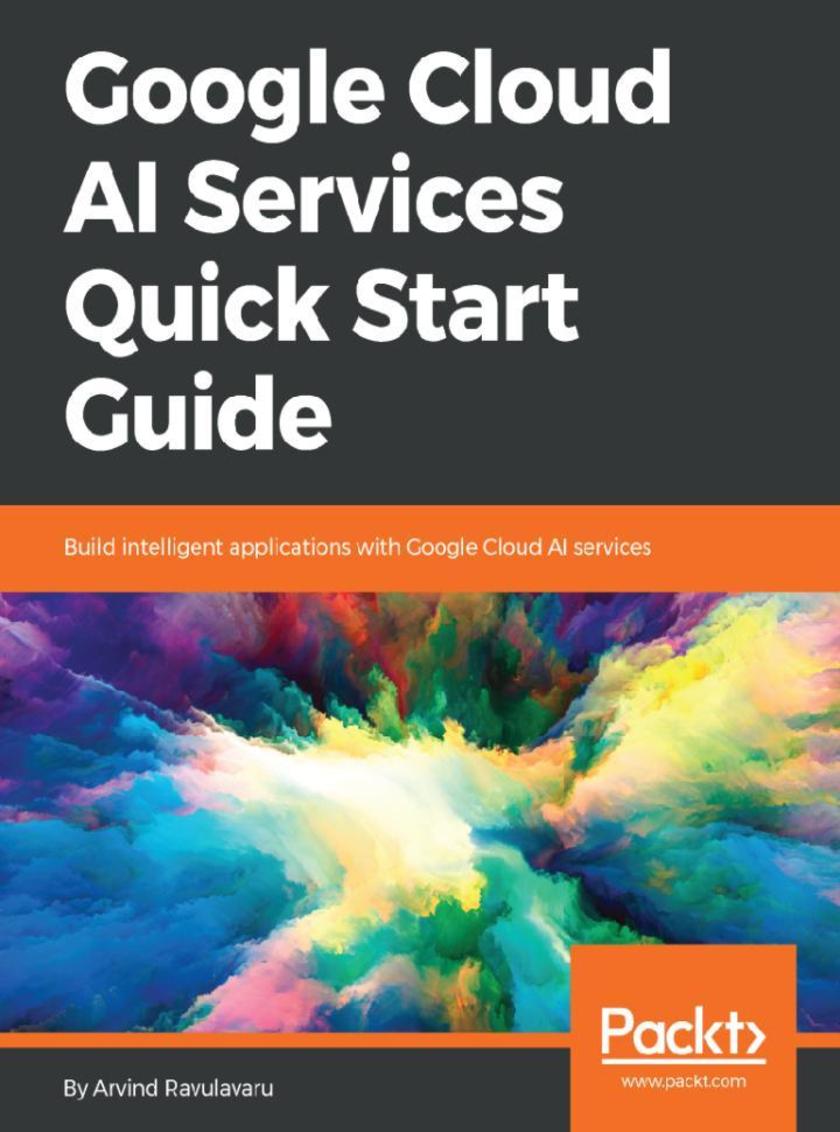
Google Cloud AI Services Quick Start Guide
¥54.49
Leverage the power of various Google Cloud AI Services by building a smart web application using MEAN Stack About This Book ? Start working with the Google Cloud Platform and the AI services it offers ? Build smart web applications by combining the power of Google Cloud AI services and the MEAN stack ? Build a web-based dashboard of smart applications that perform language processing, translation, and computer vision on the cloud Who This Book Is For This book is ideal for data professionals and web developers who want to use the power of Google Cloud AI services in their projects, without the going through the pain of mastering machine learning for images, videos and text. Some familiarity with the Google Cloud Platform will be helpful. What You Will Learn ? Understand Google Cloud Platform and its Cloud AI services ? Explore the Google ML Services ? Work with an Angular 5 MEAN stack application ? Integrate Vision API, Video Intelligence API for computer vision ? Be ready for conversational experiences with the Speech Recognition API, Cloud Language Process and Cloud Translation API services ? Build a smart web application that uses the power of Google Cloud AI services to make apps smarter In Detail Cognitive services are the new way of adding intelligence to applications and services. Now we can use Artificial Intelligence as a service that can be consumed by any application or other service, to add smartness and make the end result more practical and useful. Google Cloud AI enables you to consume Artificial Intelligence within your applications, from a REST API.? Text, video and speech analysis are among the powerful machine learning features that can be used. This book is the easiest way to get started with the Google Cloud AI services suite and open up the world of smarter applications. This book will help you build a Smart Exchange, a forum application that will let you upload videos, images and perform text to speech conversions and translation services. You will use the power of Google Cloud AI Services to make our simple forum application smart by validating the images, videos, and text provided by users to Google Cloud AI Services and make sure the content which is uploaded follows the forum standards, without a human curator involvement. You will learn how to work with the Vision API, Video Intelligence API, Speech Recognition API, Cloud Language Process, and Cloud Translation API services to make your application smarter. By the end of this book, you will have a strong understanding of working with Google Cloud AI Services, and be well on the way to building smarter applications. Style and approach We follow a project-based approach where we build a public forum application ifor uploading images or videos, posting and translating text messages. We incrementally add features by integrating each API as we go.
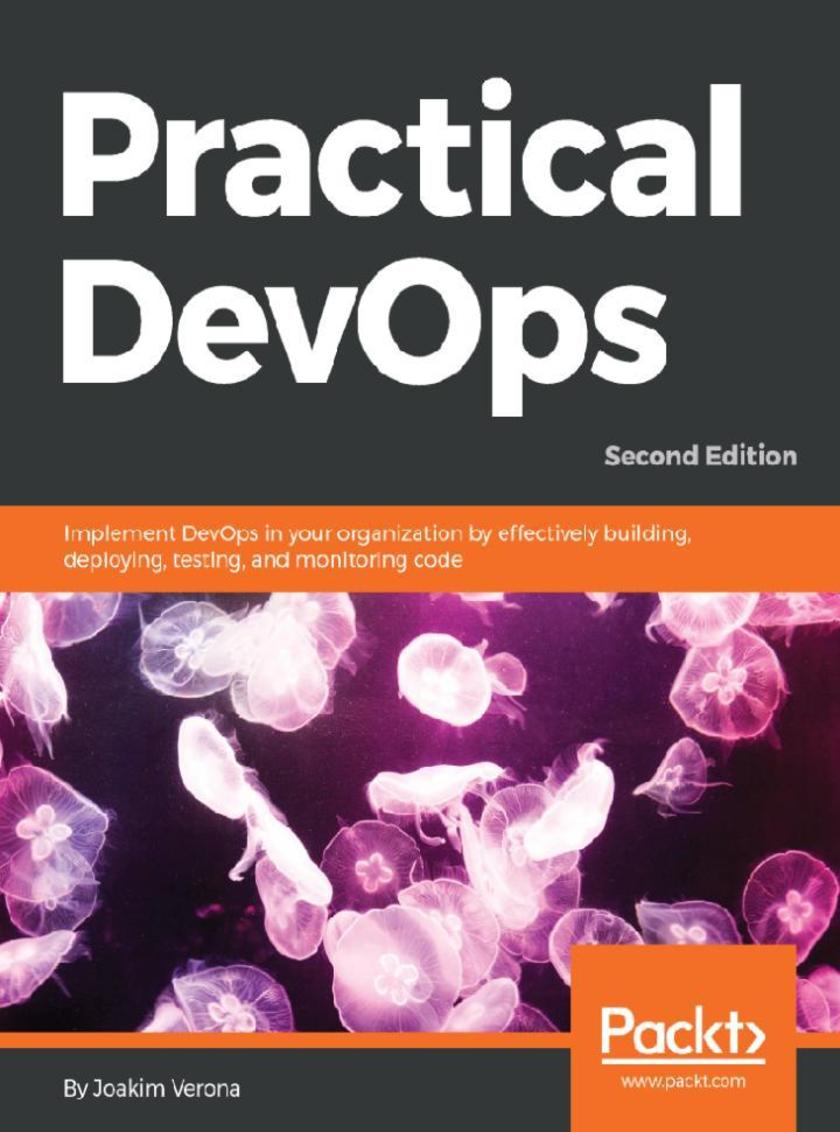
Practical DevOps
¥81.74
Understand the benefits of DevOps and continuous delivery and see how they support the agile software development process About This Book ? Learn how DevOps can accelerate your entire software development life cycle ? Improve your organization's performance to ensure the smooth production of software and services ? Get hands-on experience in using efficient DevOps tools to better effect Who This Book Is For If you're a developer or system administrator looking to take on larger responsibilities and understand how the infrastructure that builds today's enterprises works, this is the book for you. This book will also help you greatly if you're an operations worker who would like to better support developers. You do not need any previous knowledge of DevOps to understand the concepts in this book. What You Will Learn ? Understand how all deployment systems fit together to form a larger system ? Set up and familiarize yourself with all the tools you need to be efficient with DevOps ? Design an application suitable for continuous deployment systems with DevOps in mind ? Store and manage your code effectively using Git, Gerrit, Gitlab, and more ? Configure a job to build a sample CRUD application ? Test your code using automated regression testing with Jenkins Selenium ? Deploy your code using tools such as Puppet, Ansible, Palletops, Chef, and Vagrant In Detail DevOps is a practical field that focuses on delivering business value as efficiently as possible. DevOps encompasses all code workflows from testing environments to production environments. It stresses cooperation between different roles, and how they can work together more closely, as the roots of the word imply—Development and Operations. Practical DevOps begins with a quick refresher on DevOps and continuous delivery and quickly moves on to show you how DevOps affects software architectures. You'll create a sample enterprise Java application that you’'ll continue to work with through the remaining chapters. Following this, you will explore various code storage and build server options. You will then learn how to test your code with a few tools and deploy your test successfully. In addition to this, you will also see how to monitor code for any anomalies and make sure that it runs as expected. Finally, you will discover how to handle logs and keep track of the issues that affect different processes. By the end of the book, you will be familiar with all the tools needed to deploy, integrate, and deliver efficiently with DevOps. Style and approach This book is primarily a technical guide to DevOps with practical examples suitable for people who like to learn by implementing concrete working code.

Python Penetration Testing Essentials
¥54.49
This book gives you the skills you need to use Python for penetration testing, with the help of detailed code examples. This book has been updated for Python 3.6.3 and Kali Linux 2018.1. About This Book ? Detect and avoid various attack types that put the privacy of a system at risk ? Leverage Python to build efficient code and eventually build a robust environment ? Learn about securing wireless applications and information gathering on a web server Who This Book Is For If you are a Python programmer, a security researcher, or an ethical hacker and are interested in penetration testing with the help of Python, then this book is for you. Even if you are new to the field of ethical hacking, this book can help you find the vulnerabilities in your system so that you are ready to tackle any kind of attack or intrusion. What You Will Learn ? The basics of network pentesting including network scanning and sniffing ? Wireless, wired attacks, and building traps for attack and torrent detection ? Web server footprinting and web application attacks, including the XSS and SQL injection attack ? Wireless frames and how to obtain information such as SSID, BSSID, and the channel number from a wireless frame using a Python script ? The importance of web server signatures, email gathering, and why knowing the server signature is the first step in hacking In Detail This book gives you the skills you need to use Python for penetration testing (pentesting), with the help of detailed code examples. We start by exploring the basics of networking with Python and then proceed to network hacking. Then, you will delve into exploring Python libraries to perform various types of pentesting and ethical hacking techniques. Next, we delve into hacking the application layer, where we start by gathering information from a website. We then move on to concepts related to website hacking—such as parameter tampering, DDoS, XSS, and SQL injection. By reading this book, you will learn different techniques and methodologies that will familiarize you with Python pentesting techniques, how to protect yourself, and how to create automated programs to find the admin console, SQL injection, and XSS attacks. Style and approach The book starts at a basic level and moves to a higher level of network and web security. The execution and performance of code are both taken into account.
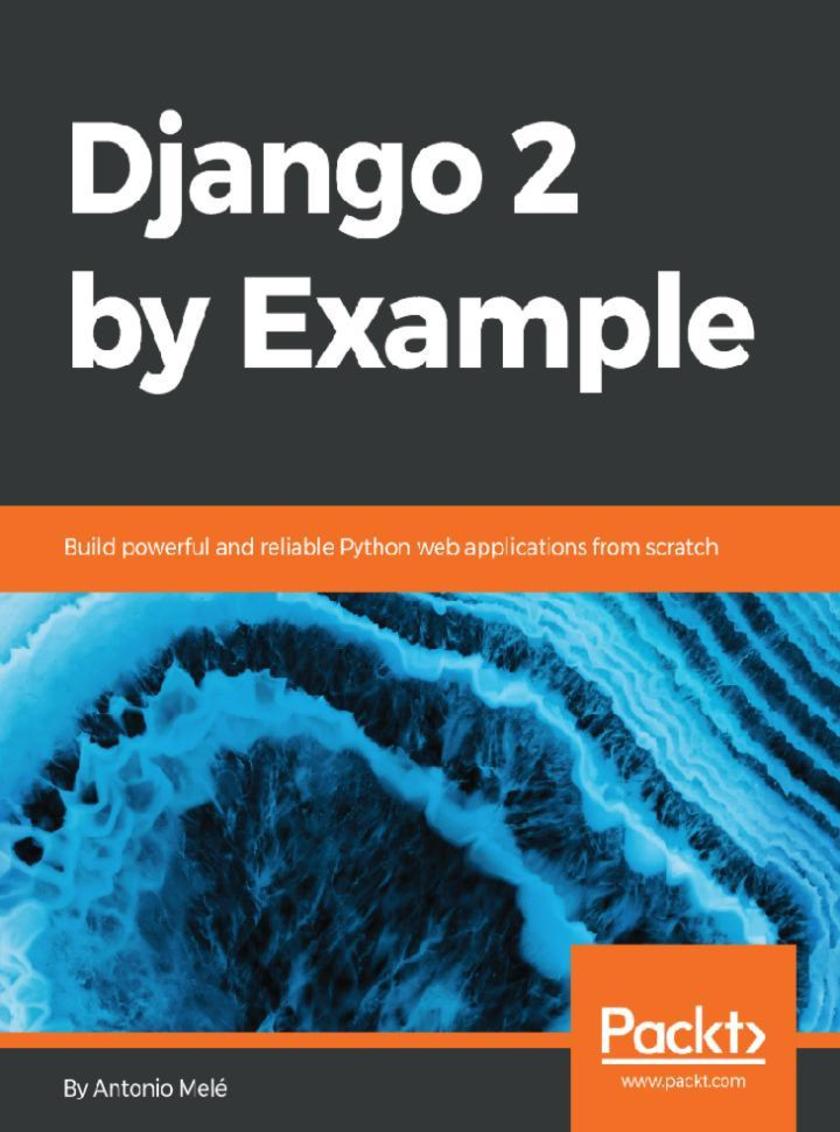
Django 2 by Example
¥90.46
Learn Django 2.0 with four end-to-end projects About This Book ? Learn Django by building real-world web applications from scratch ? Develop powerful web applications quickly using the best coding practices ? Integrate other technologies into your application with clear, step-by-step explanations and comprehensive example code Who This Book Is For If you are a web developer who wants to see how to build professional sites with Django, this book is for you. You will need a basic knowledge of Python, HTML, and JavaScript, but you don't need to have worked with Django before. What You Will Learn ? Build practical, real-world web applications with Django ? Use Django with other technologies, such as Redis and Celery ? Develop pluggable Django applications ? Create advanced features, optimize your code, and use the cache framework ? Add internationalization to your Django projects ? Enhance your user experience using JavaScript and AJAX ? Add social features to your projects ? Build RESTful APIs for your applications In Detail If you want to learn about the entire process of developing professional web applications with Django, then this book is for you. This book will walk you through the creation of four professional Django projects, teaching you how to solve common problems and implement best practices. You will learn how to build a blog application, a social image-bookmarking website, an online shop, and an e-learning platform. The book will teach you how to enhance your applications with AJAX, create RESTful APIs, and set up a production environment for your Django projects. The book walks you through the creation of real-world applications, while solving common problems and implementing best practices. By the end of this book, you will have a deep understanding of Django and how to build advanced web applications Style and approach This easy-to-follow guide takes you through the process of building four different production-ready Django projects with a simple step-by-step approach.

Mastering JavaFX 10
¥81.74
Design modern, rich interfaces for Java apps using JavaFX 10 About This Book ? Become a pro with the latest JavaFX 10 framework ? Create dynamic content using the animation API ? Create and customize plugins and use them efficiently in different applications Who This Book Is For If you’re a Java developer who wants to upgrade to the latest version of JavaFX to create stunning, feature-rich graphical applications, this book is for you. What You Will Learn ? Construct and customize JavaFX windows ? Manage UI elements and arrange them on the Scene ? Explore the Bindings API and use it to coordinate various UI elements ? Use FXML to design amazing FX applications ? Write and manage CSS to style your applications ? Add audio and video to your projects ? Prepare your application to be launched on the target platform In Detail JavaFX 10 is used to create media-rich client applications. This book takes you on a journey to use JavaFX 10 to build applications that display information in a high-performance, modern user interface featuring audio, video, graphics, and animation. Mastering JavaFX 10 begins by introducing you to the JavaFX API. You will understand the steps involved in setting up your development environment and build the necessary dependencies. This is followed by exploring how to work with the assets, modules, and APIs of JavaFX. This book is filled with practical examples to guide you through the major features of JavaFX 10. In addition to this, you will acquire a practical understanding of JavaFX custom animations, merging different application layers smoothly, and creating a user-friendly GUI with ease. By the end of the book, you will be able to create a complete, feature-rich Java graphical application using JavaFX. Style and approach The book adopts a practical, step-by-step approach.
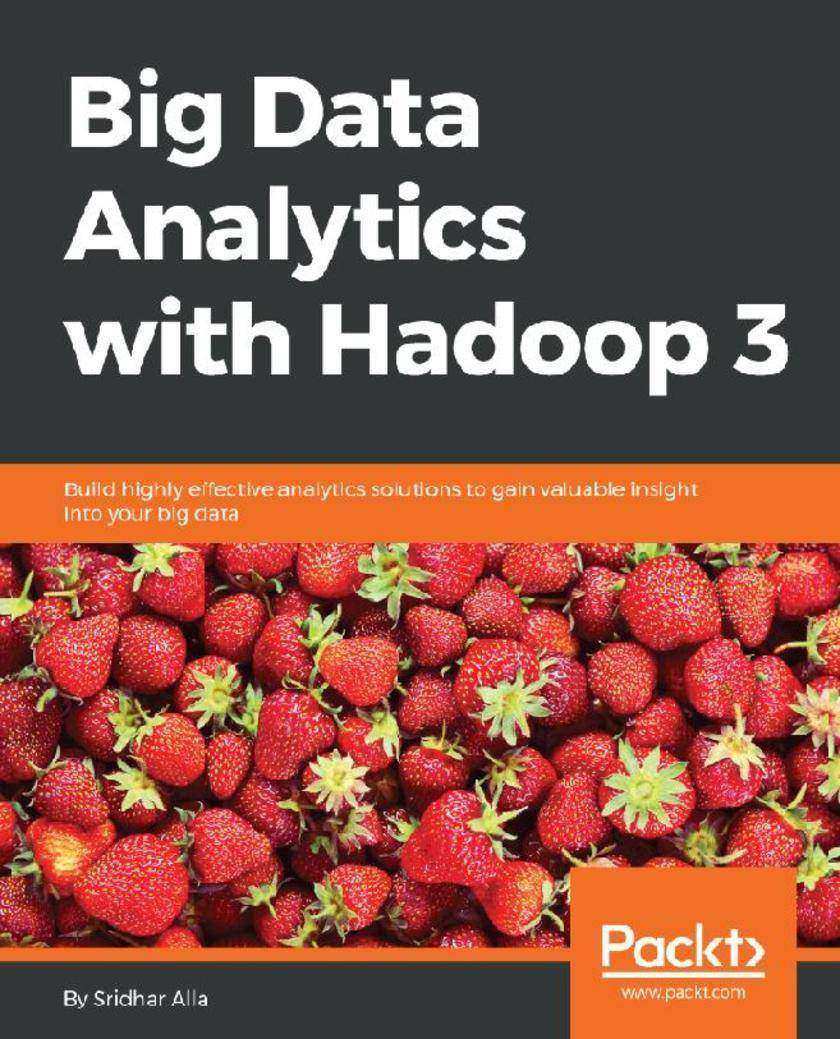
Big Data Analytics with Hadoop 3
¥73.02
Explore big data concepts, platforms, analytics, and their applications using the power of Hadoop 3 About This Book ? Learn Hadoop 3 to build effective big data analytics solutions on-premise and on cloud ? Integrate Hadoop with other big data tools such as R, Python, Apache Spark, and Apache Flink ? Exploit big data using Hadoop 3 with real-world examples Who This Book Is For Big Data Analytics with Hadoop 3 is for you if you are looking to build high-performance analytics solutions for your enterprise or business using Hadoop 3’s powerful features, or you’re new to big data analytics. A basic understanding of the Java programming language is required. What You Will Learn ? Explore the new features of Hadoop 3 along with HDFS, YARN, and MapReduce ? Get well-versed with the analytical capabilities of Hadoop ecosystem using practical examples ? Integrate Hadoop with R and Python for more efficient big data processing ? Learn to use Hadoop with Apache Spark and Apache Flink for real-time data analytics ? Set up a Hadoop cluster on AWS cloud ? Perform big data analytics on AWS using Elastic Map Reduce In Detail Apache Hadoop is the most popular platform for big data processing, and can be combined with a host of other big data tools to build powerful analytics solutions. Big Data Analytics with Hadoop 3 shows you how to do just that, by providing insights into the software as well as its benefits with the help of practical examples. Once you have taken a tour of Hadoop 3’s latest features, you will get an overview of HDFS, MapReduce, and YARN, and how they enable faster, more efficient big data processing. You will then move on to learning how to integrate Hadoop with the open source tools, such as Python and R, to analyze and visualize data and perform statistical computing on big data. As you get acquainted with all this, you will explore how to use Hadoop 3 with Apache Spark and Apache Flink for real-time data analytics and stream processing. In addition to this, you will understand how to use Hadoop to build analytics solutions on the cloud and an end-to-end pipeline to perform big data analysis using practical use cases. By the end of this book, you will be well-versed with the analytical capabilities of the Hadoop ecosystem. You will be able to build powerful solutions to perform big data analytics and get insight effortlessly. Style and approach Filled with practical examples and use cases, this book will not only help you get up and running with Hadoop, but will also take you farther down the road to deal with Big Data Analytics

Hands-On Concurrency with Rust
¥81.74
Get to grips with modern software demands by learning the effective uses of Rust's powerful memory safety. About This Book ? Learn and improve the sequential performance characteristics of your software ? Understand the use of operating system processes in a high-scale concurrent system ? Learn of the various coordination methods available in the Standard library Who This Book Is For This book is aimed at software engineers with a basic understanding of Rust who want to exploit the parallel and concurrent nature of modern computing environments, safely. What You Will Learn ? Probe your programs for performance and accuracy issues ? Create your own threading and multi-processing environment in Rust ? Use coarse locks from Rust’s Standard library ? Solve common synchronization problems or avoid synchronization using atomic programming ? Build lock-free/wait-free structures in Rust and understand their implementations in the crates ecosystem ? Leverage Rust’s memory model and type system to build safety properties into your parallel programs ? Understand the new features of the Rust programming language to ease the writing of parallel programs In Detail Most programming languages can really complicate things, especially with regard to unsafe memory access. The burden on you, the programmer, lies across two domains: understanding the modern machine and your language's pain-points. This book will teach you to how to manage program performance on modern machines and build fast, memory-safe, and concurrent software in Rust. It starts with the fundamentals of Rust and discusses machine architecture concepts. You will be taken through ways to measure and improve the performance of Rust code systematically and how to write collections with confidence. You will learn about the Sync and Send traits applied to threads, and coordinate thread execution with locks, atomic primitives, data-parallelism, and more. The book will show you how to efficiently embed Rust in C++ code and explore the functionalities of various crates for multithreaded applications. It explores implementations in depth. You will know how a mutex works and build several yourself. You will master radically different approaches that exist in the ecosystem for structuring and managing high-scale systems. By the end of the book, you will feel comfortable with designing safe, consistent, parallel, and high-performance applications in Rust. Style and approach Readers will be taken through various ways to improve the performance of their Rust code.
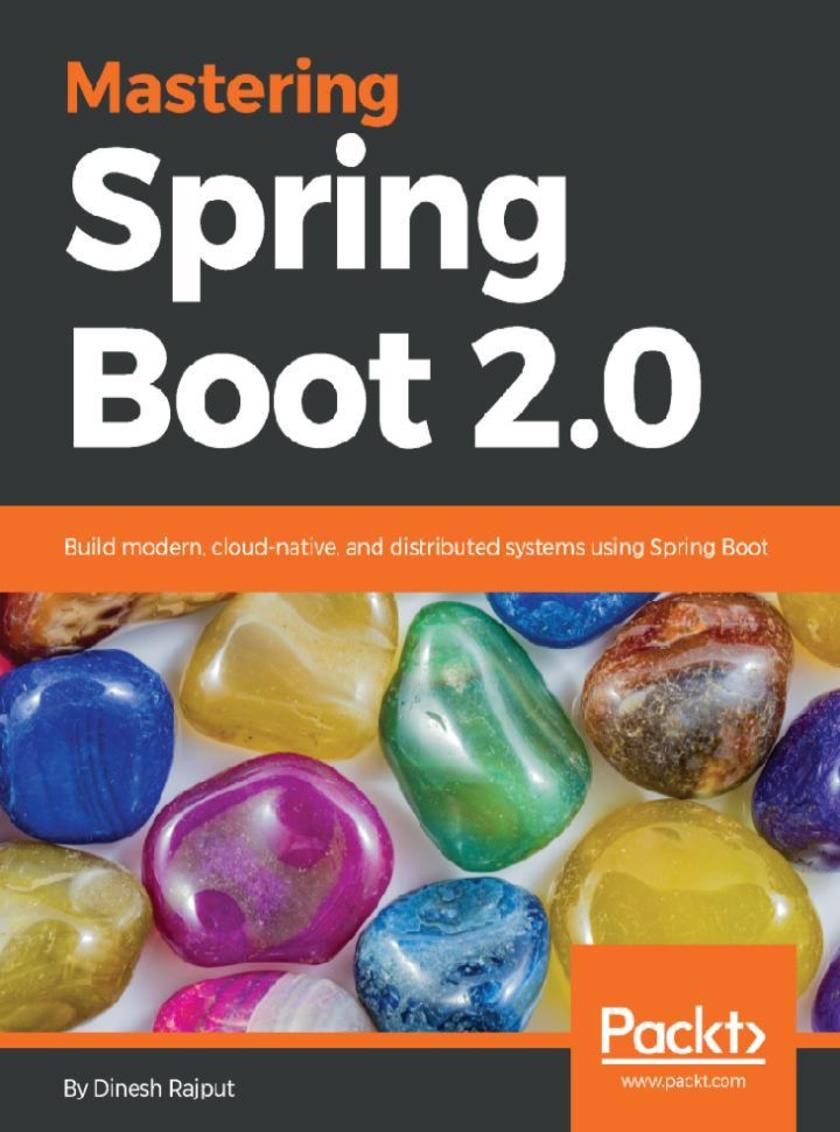
Mastering Spring Boot 2.0
¥90.46
Learn to develop, test, and deploy your Spring Boot distributed application and explore various best practices. About This Book ? Build and deploy your microservices architecture in the cloud ? Build event-driven resilient systems using Hystrix and Turbine ? Explore API management tools such as KONG and API documentation tools such as Swagger Who This Book Is For The book is targeted at experienced Spring and Java developers who have a basic knowledge of working with Spring Boot. The reader should be familiar with Spring Boot basics, and aware of its benefits over traditional Spring Framework-based applications. What You Will Learn ? Build logically structured and highly maintainable Spring Boot applications ? Configure RESTful microservices using Spring Boot ? Make the application production and operation-friendly with Spring Actuator ? Build modern, high-performance distributed applications using cloud patterns ? Manage and deploy your Spring Boot application to the cloud (AWS) ? Monitor distributed applications using log aggregation and ELK In Detail Spring is one of the best frameworks on the market for developing web, enterprise, and cloud ready software. Spring Boot simplifies the building of complex software dramatically by reducing the amount of boilerplate code, and by providing production-ready features and a simple deployment model. This book will address the challenges related to power that come with Spring Boot's great configurability and flexibility. You will understand how Spring Boot configuration works under the hood, how to overwrite default configurations, and how to use advanced techniques to prepare Spring Boot applications to work in production. This book will also introduce readers to a relatively new topic in the Spring ecosystem – cloud native patterns, reactive programming, and applications. Get up to speed with microservices with Spring Boot and Spring Cloud. Each chapter aims to solve a specific problem or teach you a useful skillset. By the end of this book, you will be proficient in building and deploying your Spring Boot application. Style and approach The book takes a practical, example-driven approach to teaching you all the advanced features of Spring Boot 2.0




 购物车
购物车 个人中心
个人中心



